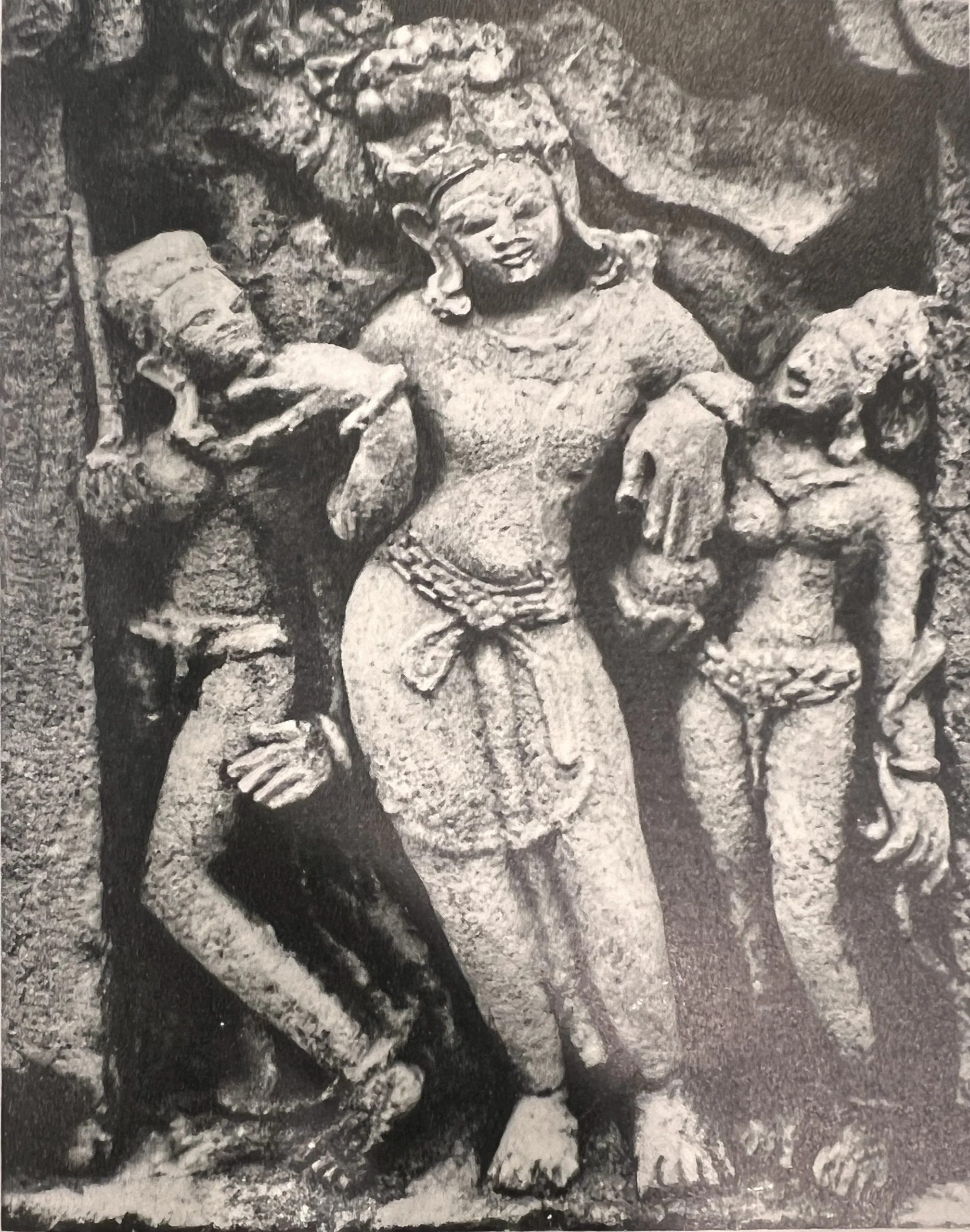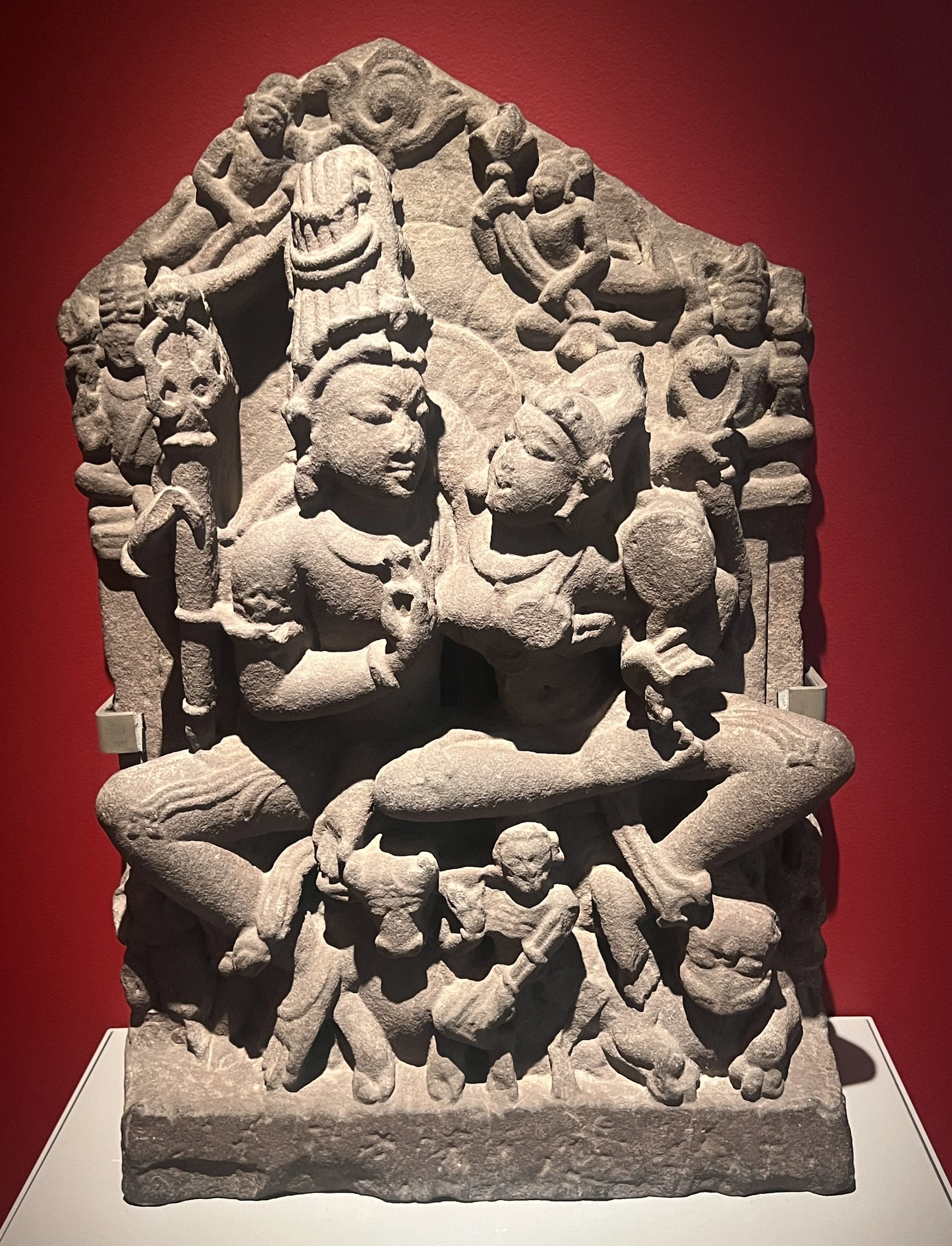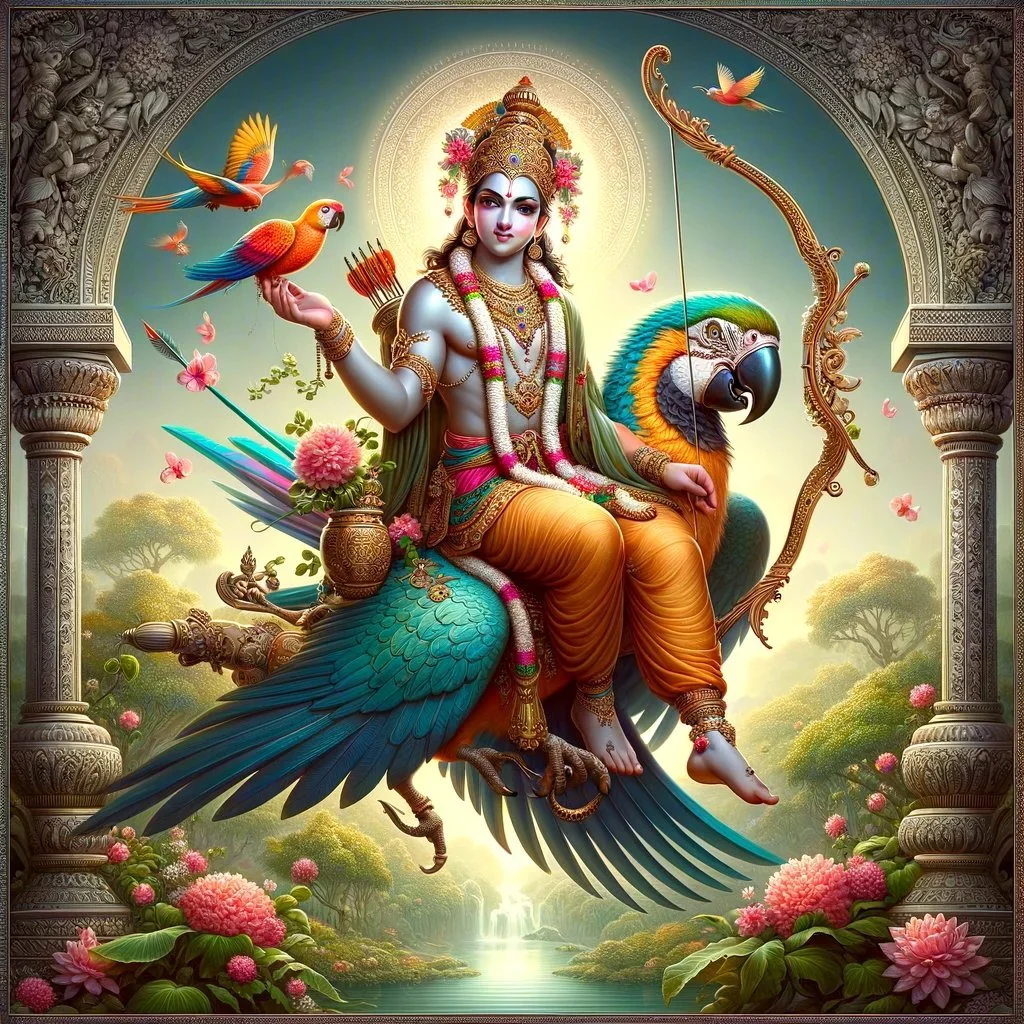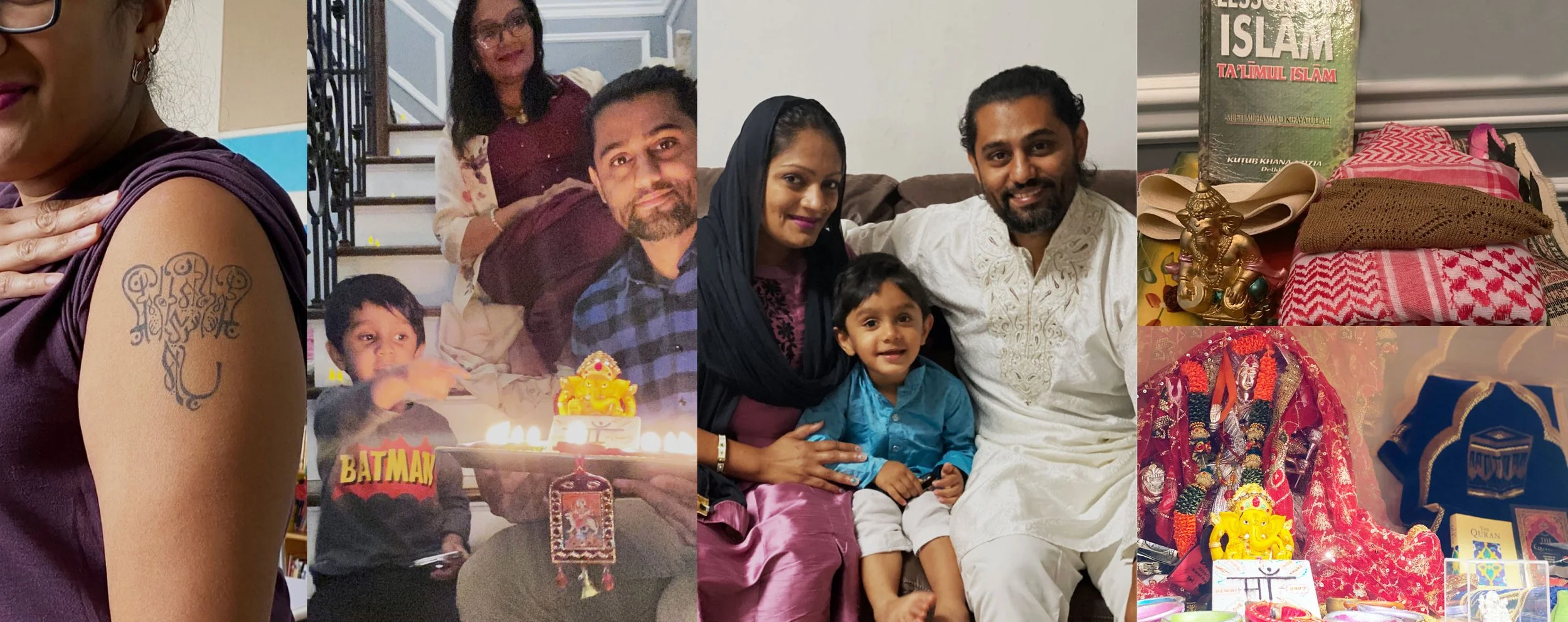LOVE IS LOVE or IS IT? Why We Fear the God of Love & Hindu Muslim Marriages
Kama: The God of Love & Desire, Why We Seem to Fear Him
I recently spent time in England researching at many libraries including the Bodleian—and I’m still not done.
Among the many sacred texts I’ve studied, one subject continues to captivate me:
Kamadeva, the ancient Hindu deity of love and desire, along with his consorts, Goddess Rati (pleasure) and Goddess Priti (affection).
This exploration has deepened my reflection on the subject of love—especially romantic love, and even more so within the context of Hindu-Muslim marriages.
I’ve delved into sacred texts, ancient poetry, and ritual traditions. I keep returning to a single, powerful truth: love—true, soul-deep love—is not just a human emotion, but a divine force.
In the West, Kamadeva is reduced to “Cupid”—a simplistic misunderstanding of a far more complex figure. Hinduism—or more accurately, Sanātana Dharma, meaning “eternal truth”—isn’t easily defined.
Hinduism is not a monolith—it’s a vast, diverse ocean of philosophies, practices, and ways of being; not confined to scriptures or temples, but alive within, defying easy definition, much like love itself.
Hinduism Is Love
Hinduism is love—not merely a “religion” in the Western sense, but an intimate, lived experience felt in the heart, body, and soul.
Kamadeva and Rati do not just symbolize sex, sensuality, or romantic love; they embody the sacred creative energy that fuels and sustains the universe.
In the Atharva Veda (9.2.19), Kāma is invoked as the supreme force—one of the Viśvedevas, the Universal Principles—revered as the divine impulse behind all life.
(Vedas are Ancient Hindu Scriptures dating back to 2nd millennium BCE maybe older)
In Hindu thought, love is a divine force—one that dissolves the ego, connects us to the sacred, and reveals the profound interconnectedness of all things.
Kamadeva, while god of physical desire, ultimately reminds us that through love—whether romantic, spiritual, or sensual—is joy, connection, transcendence, and ultimately, a glimpse of the divine.
So why is this sacred narrative so often erased?
Colonization, Shame & the Fear of Love
Why do so many self-help books borrow from Eastern traditions? Why do we hear stories of Westerners traveling East to “find themselves”? Everyone talks about “Buddhism,” yet rarely acknowledges that it emerged from Hinduism—perhaps because Hinduism doesn’t come neatly packaged with “white” influencers, simplified rituals, or easy meditation rules–there’s where its beauty lies–DIVERSITY!
Hinduism is the world’s oldest living spiritual tradition—the “Big Daddy” of all faiths.
Unlike Christianity, Judaism, Islam, which trace their origins to a single founder, the prophet Abraham and follow a defined doctrine or holy book, Hinduism has no one prophet, and no singular scripture. I understand that this lack of defined boundaries can be harder for some to grasp—there’s beauty in the structure and order that other traditions offer. But the beauty of Hinduism lies in its freedom: the freedom to love, to think, to question, and to live openly and expansively.
Love is the highest form of worship, prayer, and truth. The modern world—shaped by colonization and puritanical norms—has buried or distorted these truths.
Kamadeva, his stories, wisdom, temples, and sacred practices have been lost to history or distorted, erased, and reduced to eroticism, just sex, and taboo.
Colonization and puritanical thinking stripped once reverent understandings of love, longing, and desire, reducing them to something shameful.
In both the West and even parts of the East, Kamadeva has been reduced to a symbol of the Kamasutra—itself misunderstood as merely a collection of sex positions rather than a sacred text on love, aesthetics, and divine union. Fetishized and dismissed, its deeper spiritual significance is largely forgotten.
A crucial fact often overlooked: the stars of the Kamasutra are not Kamadeva and Rati, but Lord Shiva and Goddess Parvati (Hinduism’s divine couple). Shiva’s loyal companion, Nandi the bull, witnessed their sacred union and composed the original teachings.
The version we know today was later compiled by the sage Vatsyayana, but its roots are undeniably divine.
But, oh…. I found so much more.
While researching at Oxford, I discovered nearly 27+ ancient Hindu scriptures focused on love, sex, and sensuality. I also came across another 7–10 texts by Muslim authors, written in Persian and Arabic, who were inspired by the Kamasutra and Kamadeva—each one beginning with “Bismillah”,
“In the name of God.” How beautiful is that? To dedicate writings on love, sex, and sensuality to the Divine?
Our ancestors—Hindu and Muslim alike—knew what we have forgotten: love, longing, and desire are not shameful. They are sacred. Paths to spiritual growth.
Sadly, much of the rich, shared history between Hindus and Muslims has been erased, stigmatized, or buried under layers of fear and misunderstanding. A simple internet search often yields narrow, dismissive interpretations branding expressions of love and longing as “haram” or forbidden.
It’s truly mind-boggling. And yet, our ancestors—both Hindu and Muslim—understood what we have forgotten:
Love, desire, sex, and longing are not shameful.
They are sacred. Life-affirming. Divine —natural parts of life and spiritual growth.
I feel deeply grateful to have read and held these ancient texts in my hands—works that remind us that love is not to stray from the sacred, but to move toward it.
Kamadeva embodies this truth: that love is a divine force.
And yet, across the world—regardless of religion or culture—we seem to fear love more than anything.
Why?
The Myth of Control
We fear love—perhaps because we cannot control it, or because it asks us to surrender, to feel, to be vulnerable.
There’s a reason Lord Ganesha (the first deity invoked in any Hindu prayer) is known as the god of wisdom - he chose celibacy (though in some traditions he has two wives). He understood that once Kama’s arrow strikes, logic falters. Love overwhelms reason.
To love fully is to abandon control—to surrender to the Divine, who is love itself.
But surrendering to the Divine can be terrifying. You can’t see the Divine. You don’t always know why you feel what you feel. Love defies logic.
And yet, we still try to confine love—boxing it in with endless checklists: marry within your caste, your religion, your race, your class, etc. Find someone who looks like you, shares your style, listens to the same music etc.
But love defies boxes and checklists. It arrives uninvited—wild, irrational, real.
What if true love exists outside those lines?
Why do you sometimes feel an immediate pull with certain people—a magnetic, inexplicable connection?
Why do those moments override every logical “list” of what you think you want in a partner?
What if you let go of the list? (I’m not saying not to have standards / values)
What if you trusted the Divine—who is love itself?
What could happen if you followed that truth, rather than feared it?
To love fully is to abandon control. To love is to surrender your heart to the Divine—who is love.
Hinduism is a faith you feel in your heart. Our stories and deities reflect this—populated with different races, cultures, and even faiths. They reflect a diversity of love we so often resist today.
When two people “make love,” it is more than a physical act—it is a moment when hearts press into one another. The body is the only thing we truly own in this world, and to share it—your love, your presence—with someone else is both sacred and vulnerable. It is a divine union. It is also a loss of control.
Yes, sex brings pleasure. It stirs sensations throughout the body. Entire books have been written about it—detailing positions, the feeling of each body part, the jewelry to wear, the kind of perfume to use.
The subject is rich, fascinating, and to feel every emotion is deeply human.
The 5 “Deadly” Divine Arrows of Kamadeva
Hinduism has never been about repression—it’s about integration.
For millennia, Hindu artists have given form to the formless—to help devotees connect with the genderless, infinite Divine. Hindus are not idol worshippers. Our sculptures are visual metaphors, designed to awaken understanding and emotion.
Take Kamadeva, the god of love and desire. He is eternally youthful, surrounded by springtime breezes, lush gardens, and the fragrances of bliss. Always by his side are his wives Rati (pleasure) and Priti (affection).
Kamadeva rides a parrot—symbolizing communication needed in any relationship—and carries a bow made of sugarcane (the mind), strung with buzzing bees (restlessness), and five arrows tipped with flowers each one representing the five senses.
Together, they show how love and desire captivate the entire being—body, mind, and spirit.
Ashoka – Excitement & anticipation (Heart): Sparks joy and the thrill of attraction.
Mango blossom – Longing & passion (Head): Awakens intense desire—overwhelming and ecstatic.
White lotus – Tranquil seduction (Eyes): Induces surrender with hypnotic calm.
Jasmine – Romance & intimacy (Touch): Deepens emotional connection and closeness.
Neelotpala (Blue Water Lily) – Spiritual yearning (Soul): Transcends the physical, connecting love to devotion.
Where do you think the Western phrase “the birds and the bees” came from when describing love and sexuality?
These are not just metaphors—they are emotional truths.
When love strikes, it consumes us: mind, body, and soul.
Kamadeva—was destroyed by Lord Shiva when he dared to awaken desire in Shiva’s heart. But his story is not one of shame—it’s one of sacredness.
Shiva resurrected Kama as Ananga, “the bodiless one”—love without form, felt everywhere. Because love cannot be contained. It cannot be controlled. And that terrifies us. Even Shiva, the great ascetic, was not immune. He fell deeply in love with Parvati, who is Shakti, the divine feminine force. Without her, he is Shava—a lifeless corpse.
Shiva resisted love, tried to destroy it—but ultimately recognized its power.
He didn’t just forgive Kama—he transformed him— elevated love as the most powerful force in all creation.
Shiva is Kama, and Kama is Shiva. Love is Divine.
So why, then, is love—our most sacred connection—so often met with suspicion, shame, and control?
Kama’s energy touches everyone, he lives everywhere. No one is above it.
Love Deserves Better: Interfaith Love and the Hindu-Muslim Divide
Which brings me to today—2025—and the continued stigma around Hindu-Muslim marriages.
In the U.S., I’ve attended countless Hindu-Christian, Hindu-Jewish, Hindu-Sikh, and Queer weddings. And yet, Hindu-Muslim unions remain taboo—often not because of religious doctrine, but because of inherited fear, generational trauma (especially due to 1947 partition, blame colonizers not each other), and deep-seated social stigma.
This is especially striking given that Islam is the second-largest religion in South Asia, after Hinduism. Our histories, cultures, and languages are profoundly intertwined. Urdu language after all is Sanskrit and Persian had a baby with Arabic being the “baby daddy”.
The underlying truth is love—we cannot seem to exist without one another. Our centuries of shared presence speak to an inescapable, enduring connection.
So why is it acceptable for South Asians in America to marry white partners with no shared cultural roots—but controversial when two brown people from different faiths (Hinduism & Islam) fall in love?
It’s a question that deserves reflection. Why did Islam flourish in South Asia, while Buddhism, born of Hinduism, gradually declined?
The answer lies not only in history but in the emotional and cultural bonds between our communities.
Hinduism and Islam have shaped and reshaped one another through art, food, poetry, music (hello ghazals, qawwali, bhajans!), language—and yes, love.
Today, many Hindu priests will bless queer or interfaith weddings. But it’s rare—almost impossible—to find a Muslim Imam willing to perform a nikah unless the Hindu partner converts.
Why? Why do we claim to honor love—but only when it fits within narrow theological checkboxes?
As NYU’s Hindu chaplain / founder of NYU Hindu Center—and perhaps the only Hindu woman formally trained in Islamic Arabic calligraphy—I’ve dedicated my life to uniting these worlds.
My interfaith work, my art, and my chaplaincy are rooted in one core truth: divinity does not discriminate. And neither should we.
I’ve loved someone deeply across faith lines. And I’ve often wondered: was it truly incompatibility that stood in our way—or fear?
Fear of judgment, fear of rejection by our own communities, fear of religious gatekeeping, of inherited wounds, or perhaps... just fear of love itself.
It hurts…..
It hurts to know that we can pray side by side, sing and dance together, celebrate or religious holidays and festivals, create, and grieve together—yet still be denied the right to love one another fully, and the right to sacred union. It hurts that generations after Partition and Colonialism, we are still haunted by their shadows.
This Is Not About Conversion. This Is About Compassion.
Love is not about conversion. It’s not about compromise or fear. It’s about compassion, respect, and surrender to something greater than ourselves.
To love fully is to release control. That’s what makes love the ultimate spiritual act—it humbles the ego, demands vulnerability, and invites us to see the Divine in another person, beyond caste, gender, or religion.
It is terrifying. And it is sacred. It’s about recognizing that love—when rooted in respect and truth—is divine.
We are all human. We are all equal in the eyes of the Divine.
Love is Love.
We must do better. And we will. Because love is something I will never stop believing in. And never stop fighting for.
BEAUTIFUL INDIAN AMERICAN HINDU MUSLIM FAMILY - READ THEIR STORY HERE
“Kamadevaya vidmahe, puspabanaya dhimahi, tanno’anangah pracodayat”

















